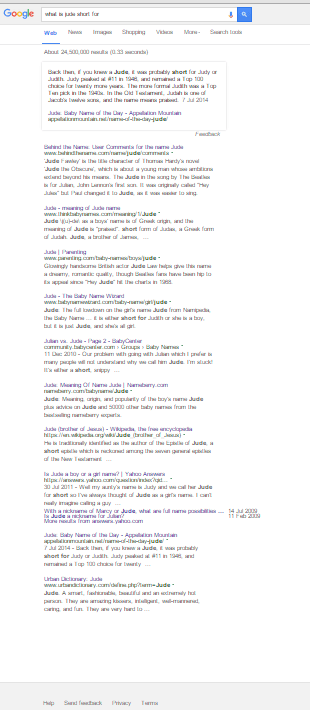Google testing: Have you been a subject?
Google is constantly testing new methods of delivering information. This serves a variety of purposes depending on the nature of the change. These are often pre-cursors to permanent changes that get added into updates or executed independently. Some of the reasons for these tests include:
- Usability – Increasing usability for their customers is a major factor for many changes. These aren’t always geared towards the average user though. Sometimes increasing usability means increasing the click-through rate of advertisements, or creating a revenue generating change.
- Design – Improving the design is major. Depending on which search function you use you may encounter unique testing situations. Image searches moved to endless scrolling in 2011. This was after a series of tests on real searchers to determine whether or not to implement it. Metrics to determine this likely included how quickly users found the image they were looking for.
- Monetization – This is tied to usability but is geared heavily towards Adwords customers. The reason Google cut the number of businesses on the maps, moved advertisements to the top, and is considering featuring paid ad users as their map “A” listing is to increase revenue. These choices aren’t necessarily good for a non-ad user, but they are frequently implemented anyway.
How do I know when I am a test subject?
When you perform a search and you notice something out of the ordinary then you are likely being subjected to a test. The method of testing being used is called A/B testing. The majority of visitors will continue to see a standard version of the site, but some will be directed to a “B” version that features certain changes. If there is already enough data to provide a control, like Google has, then B, C, D etc. could all be slight variations on a change. Individual site operators use similar methods to determine call-to-action button placements and similar changes when they are looking for a specific result (In the case of a CTA, an increase in conversion.)
Google performed a regional test before they reduced the map pack. Back when Google was considering reducing the map pack from 5 to 3 they first began testing in the greater San Francisco area. The only users who were reporting the change all came from the same region. This provides targeted data and Google also has a data center near there allowing them to quickly make changes (and route traffic to backup servers) should any problems occur during testing.
What Google tests have you been a part of?
There have been a lot of different tests over the years. Some of the ones you may have noticed include:
- Reductions in the map pack at the top of the search.
- Endless scrolling when searching for images.
- Star ratings appearing under company names in the results.
- Spotlighted companies on the right side of the search.
- Endless scrolling when searching for “all”.
- Advertisements changing positions across all searches.

Posted by Naz Mehrzad @NazMehrzad on Twitter. 8 Sept. 2015.
What have we noticed recently?
Though it was initially reported in its most basic form as far back as 2011, we’ve recently encountered true endless scrolling when searching under the “All” search tab in Google. We aren’t the first on the web to report this, but this week is the first time our staff have encountered it.
SEroundtable provided a screen capture of the search results posted to twitter. As you can see the results do not have a defined ending. This allows us to dissect the thought process on Google’s behalf as they are currently testing.
The standard format for a search has been to utilize what’s called pagination. Pagination is defined as, “the act of paging.” It is exactly what it sounds like, and means dividing search results across a number of pages. This can be performed both client and server side. So the work can be done by your browser, OS, or Google’s servers.
What are the benefits of pagination?
It’s a standard for a reason. The digital benefits include faster page loading. It’s a smaller load on the server and network to load only 10 results or so. Human-side benefits include data parsing. Humans like to have a division between results. Not only does it make it easy to know that this is result #25, and that’s my cut-off, but it makes it easy to return to a point you viewed before. Oh, the other one that seemed useful was #13 and it’s number three on page two. Endless scrolling eliminates this and makes it much more difficult to know where you are in the results and their relative importance.
When is endless scrolling useful?
Images are a perfect example. You need to see a lot and can visually process the validity of an image quickly. Having endless scrolling saves you the trouble of loading page after page when you’re processing information quickly enough that multiple pages are an inconvenience. It also works well on sites like Pinterest, where there isn’t a defined goal. Endless scrolling is beneficial when browsing habits are more akin to Facebook and you aren’t looking for anything in particular.
The future of Google testing
Testing isn’t about to end anytime soon. These experiments lead to major updates like Penguin and Mobile-Geddon. They occur across all platforms and devices, constantly honing the user experience to provide the greatest usability while increasing company profitability. If you see something out of the ordinary when searching, don’t sweat it. You may have just contributed to the advancement of the world’s biggest search engine!
